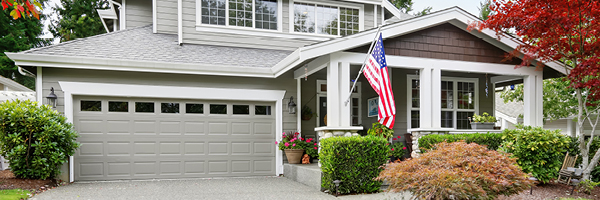
If you’ve ever experienced the loss of your home due to an event such as a fire or natural disaster, you know that rebuilding is often stressful and costly. There are several factors that determine the cost of a home rebuild. Fortunately, it may be covered under dwelling insurance within your homeowner’s insurance policy. The amount of dwelling coverage a person has determines how much of the cost to rebuild a house may be covered.
Before we get into what factors into the cost to rebuild a house, you should understand what dwelling insurance is.
Dwelling coverage or Coverage A
The number of policies and coverages within home insurance is vast. They all play an important role, especially dwelling coverage, also known as, Coverage A. This policy could protect your wallet from dishing out the full cost to rebuild a house, specifically protection for walls, floors, windows, cabinets and more. A good analogy is if you turn your house upside down and shake out the contents, whatever is left inside the house may be covered under dwelling insurance.
Fire, hail damage and vandalism are some of the most common reasons for filing a dwelling insurance claim. Home features like fencing around the house, outbuildings (sheds or garages) or playsets (trampolines or swing sets) are not covered.
Replacement cost
RCV, or replacement cost value, is how much it would cost to rebuild or replace your home based on its latest condition – pre-damage. The amount of dwelling insurance protection you get should directly correlate with your replacement cost.
It’s important to note that the actual cash value of your home, or the amount you bought it for, is not the same as replacement cost. For example, you may buy a house for $350K when the actual cost of a home rebuild is $100K or vice versa. The RCV of your home changes often, so it’s important to update your dwelling coverage often to reflect the new replacement cost amount.
1. Age of home
The older the home, the more difficult and expensive it may be to replace or rebuild to its most recent condition with the same materials.
For example, a home built 100 years ago has different styles, techniques and materials compared to a home built 10 years ago. Replacing the 100-year-old home could include replicating the detailed wood carvings on the stairs which takes a specific set of skills, material and time.

Learn about our
Home Insurance
2. Cost of lumber and labor
Your home’s location has an effect on the cost of materials and service but is greatly impacted by supply and demand. The price of lumber and labor fluctuate often due to inflation or shortages. However, your dwelling coverage won’t automatically increase to reflect these changes, so it’s important to pay attention to how much your home rebuild would cost and change your dwelling coverage limits if necessary.
For example, lumber cost under $300 per thousand board feet in April 2020. It increased by January 2022, costing roughly $980 per thousand board feet. Meaning your RCV, in addition to everyone else’s, increased as well.
3. Improvements and additions
Doing any major renovations to your home that may increase its value would also increase its RCV. The more modern and newer your home is, the higher the value it could be, making it more expensive to replace or rebuild it.
For example, your family is expanding and you don’t want to move, so you start adding additions to your house. Not only do these additions add value to your home, but they also create more structure to replace in the event of damages caused by a house fire, a severe storm or another type of covered loss.
Find out your home’s RCV
Speak with your local, independent Integrity agent about how much it would cost to replace the home you worked so hard for. Your agent is happy to walk you through the proper steps in estimating your RCV and getting the right amount of dwelling coverage to fit your needs.
Coverages described herein may not be available in all states. Please contact one of our local independent agents for complete details on coverages and discounts. If the policy coverage descriptions herein conflict with the language in the policy, the language in the policy applies. The material provided above is for informational, educational and/or suggestion purposes only, and does not imply coverage. WE RESERVE THE RIGHT TO REFUSE TO QUOTE ANY INDIVIDUAL PREMIUM RATE FOR THE INSURANCE HEREIN ADVERTISED. Applicable policies may be underwritten by Grange Insurance Company, Trustgard Insurance Company, Grange Indemnity Insurance Company, Grange Insurance Company of Michigan* and Grange Property & Casualty Insurance Company*, Integrity Insurance Company*, Integrity Property & Casualty Insurance Company*, Integrity Select Insurance Company*. *Not licensed in Pennsylvania
Sources:
Statista
Hometown Demolition